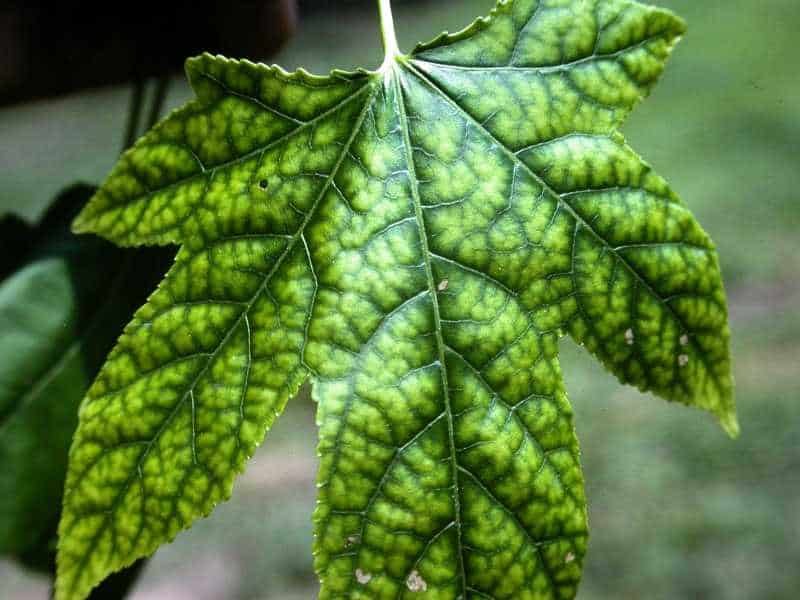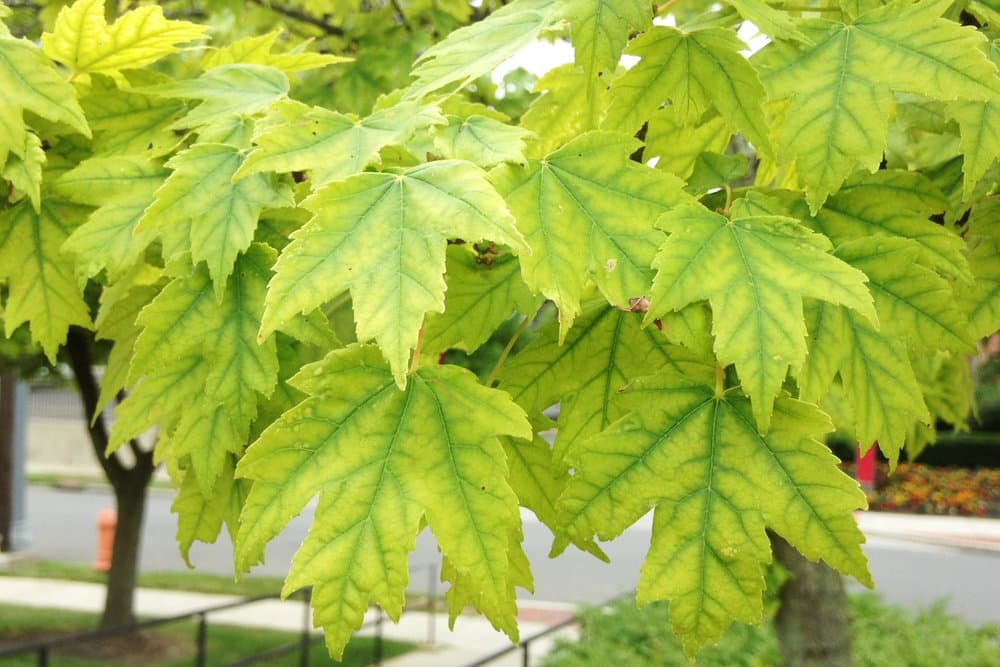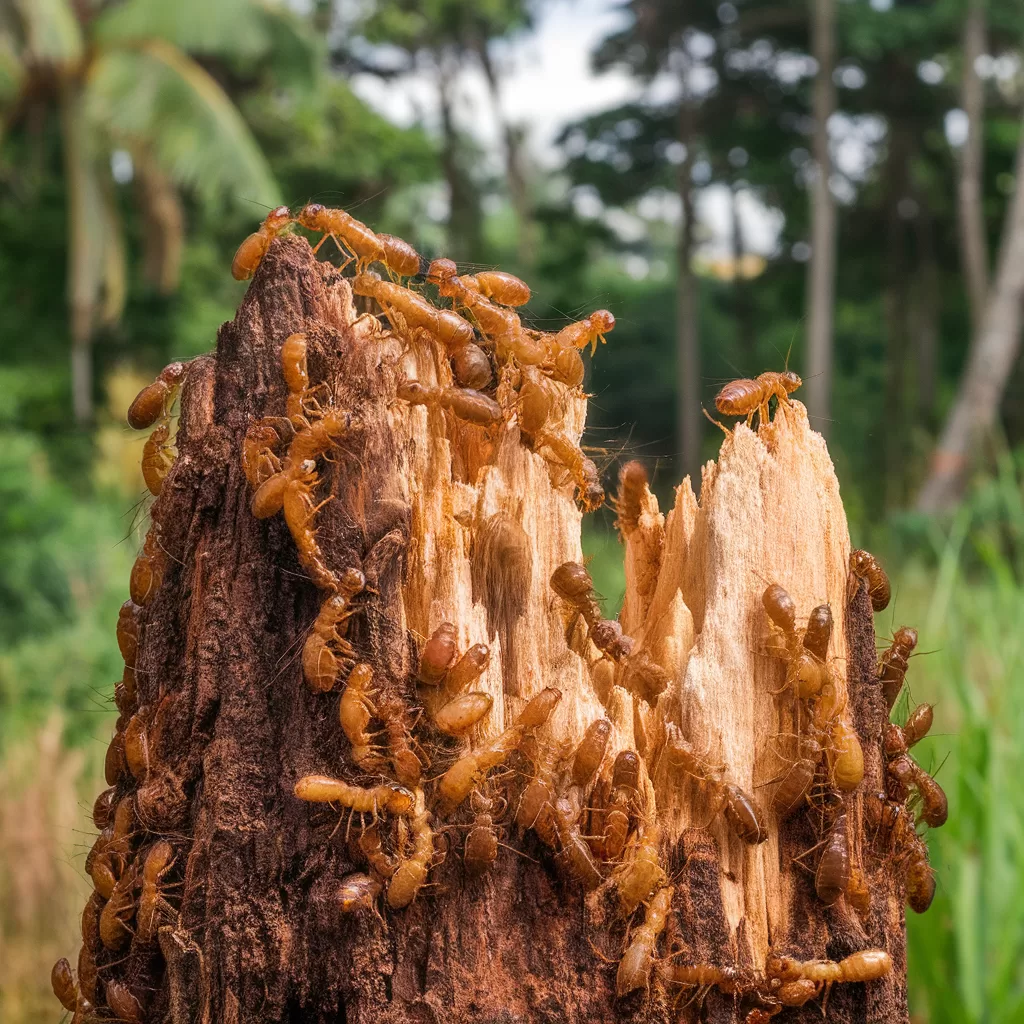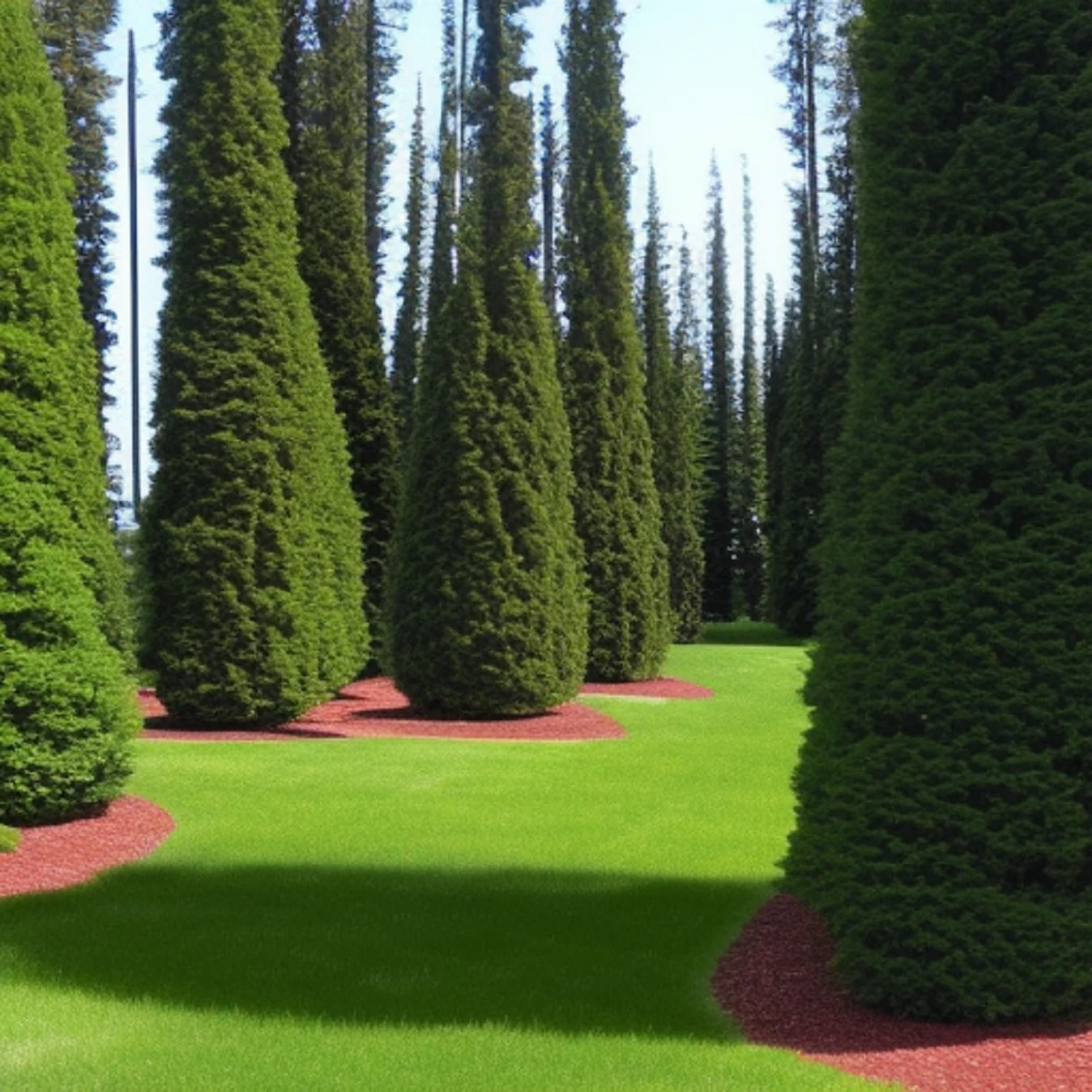What you’ll see …when a plant is chlorotic the leaves will be pale green to yellow or white (in severe cases). To distinguish which type of chlorosis the plant is suffering from simply check the leaves. Iron chlorosis starts on the younger (outer) leaves and then works its way to the older (inner) leaves. The opposite is true for manganese or zinc chlorosis where it starts on the older (inner) leaves then works its way towards the younger (outer) leaves.
The reason for the problem…there are several reasons for a plant to become chlorotic. One reason could be due to a lack of zinc; another could be a lack of manganese; however the most common is due to a lack of iron. Iron is the most important element for trees because it manages metabolism and respiration and is necessary for the formation of chlorophyll. This is responsible for a plant’s green color and its source of food and energy. Conditions, due to high soil ph, make it possible for other elements to interfere with the absorption of iron (iron can only be absorbed when soil ph, is between 5.0-6.5). Other elements if abundant that can tie up iron are calcium, copper, phosphorus, or the lack of potassium will reduce the availability of iron to the plant.
You should…keep the tree healthy and growing by: Properly watering your trees, avoid overwatering.

Performing deep root fertilization using slow-release tree fertilizers combined with a bio-stimulant and Mycorrhizae. Bio-stimulants contain vitamins and hormones that will help aid in the plants’ recovery. Mycorrhizae contain a naturally occurring fungus that attaches itself to the root system and helps the roots to take in more water and nutrients. Another option is to inject micronutrients into the tree trunk. Of course, pruning plays a vital role in this as well.



